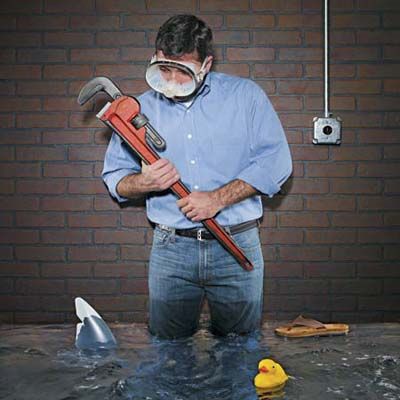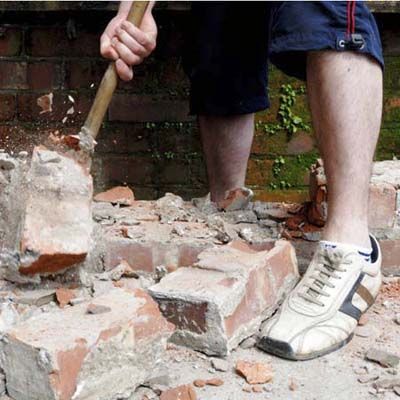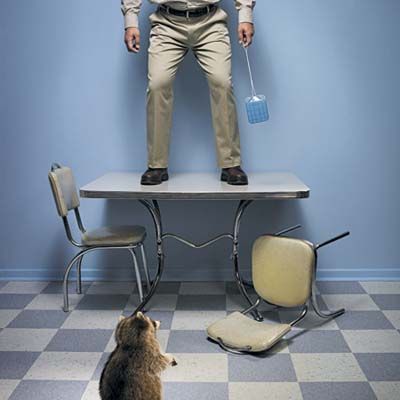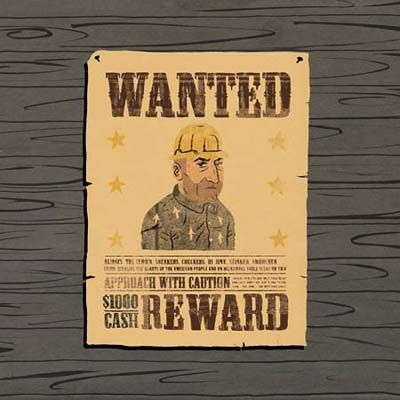Household disasters can throw your life into chaos, damage your property, and leave you feeling lost. Being prepared and knowing how to respond can make all the difference. This guide will walk you through common household emergencies, help you prepare for potential problems, and show you how to handle various home crises.
Common Household Disasters
Household disasters come in many forms, from minor inconveniences to major emergencies. Knowing what to expect helps you prepare and respond effectively.
Types of Household Emergencies
Common household emergencies include:
- Water damage: From flooding or burst pipes.
- Structural issues: Such as damaged load-bearing walls.
- Wildlife intrusions: Unwanted animals in your home.
- Fire and smoke damage: Whether from a kitchen fire or chimney mishap.
- Hazardous materials: Like lead paint or asbestos exposure.
- Legal challenges: Including property liens or disputes with neighbors.
To handle each situation safely, you’ll need an approach and knowledge specific to that situation.
Psychological Impact of Household Crises
Experiencing a household disaster can be emotionally exhausting. Stress, anxiety, depression, and even symptoms of post-traumatic stress are common after a crisis and can take a toll on your mental health. Recognize these psychological effects and seek support as soon as possible.
For more mental health and financial resources, scroll down to the Post Recovery Strategies section.
Preparing for Potential Household Disasters
Preparation is key to reducing the impact of a disaster. Here’s how to get started.
Creating an Emergency Kit
A well-stocked emergency kit can be a lifesaver. We recommend building a basic emergency kit that contains the following essential items:
- Battery-powered or hand-crank radio
- First aid kit
- Flashlight and extra batteries
- Non-perishable food (at least a three-day supply)
- Water (one gallon per person per day for at least three days)
- Whistle to signal for help
Developing a Family Communication Plan
Create a plan for how your family will communicate and reunite in an emergency. Your plan should include:
- Important phone numbers and contact information
- Meeting places (both in your neighborhood and outside your area)
- An out-of-area emergency contact
- Special considerations for those with special needs or disabilities
Handling Water-Related Emergencies in Your Home

Water-related emergencies, such as flooding or burst pipes, can cause extensive damage to your home if they’re not addressed quickly and correctly.
Safety should be your first concern when you’ve got a flood. If the water is coming from a plumbing problem (that is, if it’s not teeming outside), shut off the main right away—unless you have to swim to it. Be mindful of electrical hazards, especially in older homes where wiring may be near the ground. Even ankle-deep water can be electrified, so call an electrician or the utility to cut power to the building first.
If it’s a burst pipe, call a plumber all a plumber for repairs and start removing the water as soon as possible to minimize damage. Use a wet vacuum or pump to remove standing water, and set up fans and dehumidifiers to dry the area thoroughly. If it’s a rainstorm, sit tight and wait for the water level to drop before attempting a cleanup.
You can’t do much to prevent pipes from bursting other than never letting them freeze. But you can protect your home from rain-induced flooding. “Make sure your yard slopes away from the house and that your gutters are working properly,” says Clark Campbell, owner of an Atlanta basement waterproofing company and president of the National Association of Waterproofers. If flooding is a recurring problem, installing a sump pump or repairing foundation cracks can help.
Addressing Structural Issues of Your Home

Structural problems can compromise the safety and integrity of your home, so identify and address any structural safety issues quickly.
Accidentally Taking Down Load-Bearing Walls
You may have just taken down a bearing wall mid-demolition. Clues that it was a load-bearing wall include:
- Walls that run perpendicular to the floor joists above
- Walls that sit directly above a basement beam
- Matching walls on the stories above or below
If you’re unsure, consult a contractor or structural engineer for guidance before you demo.
But to fix this in a pinch, first build two temporary walls (one on either side of the removed wall) by securing 2-by-4s to the floor and ceiling and inserting a stud between them under each joist. Cut the studs 1/8 to 3/16 of an inch longer than needed, says This Old House general contractor Tom Silva, and wedge them in place with a sledgehammer. Then, call a contractor or engineer who should be able to cut back the joists and install a beam in the ceiling.
Dealing With Foundation Problems
Foundation issues can lead to serious structural problems if left unaddressed. Signs of foundation problems include cracks in walls or floors, doors that won’t close properly, and uneven floors. If you suspect foundation issues, have a professional inspection done to determine the extent of the problem and necessary repairs.
Managing Wildlife Intrusions

Wild animals in your home can be both distressing and dangerous. Here’s how to handle the situation safely.
Removing Wild Animals From Your Home
If you find a wild animal in your house, remain calm and don’t try to chase it out forcefully. “Don’t try to herd a bird with a broom or tennis racket. It’ll just panic and try to hide,” says zoologist and trained wildlife-control agent Tom Scollins. “Instead, turn off the lights and open the windows, drapes, and blinds. It’ll feel the air currents and fly toward the light.”
For larger animals like squirrels or raccoons, your best bet is trying to confine them to one room and opening windows to let them escape on their own.
Preventing Future Animal Entries
“Prevention is so much cheaper than removal,” Scollins says.
To prevent future wildlife intrusions, install chimney caps on flues and snap-in screens inside dryer-vent openings. Keep mulch thin around the foundation to deter burrowing rodents, close screens when you have many birds in your yard, and install a bat house to keep local bats out of your attic.
Tackling Fire and Smoke Damage

Fires can cause significant damage, and smoke can linger long after the flames are out. Acting quickly can minimize long-term effects.
Immediate Fire Response
If you accidentally start a fire, like in a fireplace with a closed damper, act fast. Open the damper if possible, contain the smoke by shutting doors to the room, and open windows to vent the smoke. Turn off your HVAC system and use a fire extinguisher to put out any flames. If the fire is out of control, evacuate and call emergency services.
Long-Term Smoke Damage Remediation
After a fire, you’ll need thorough cleaning to remove the soot and smoke residue. Jeff Bishop, technical advisor for the Institute of Inspection, Cleaning, and Restoration Certification (IICRC), recommends vacuuming all residue and scrubbing stains with a nonabrasive powdered detergent mixed with warm water.
For extensive damage, we strongly recommend hiring a professional restoration service.
Dealing With Hazardous Materials
Avoiding health consequences after finding hazardous materials in your home requires careful handling and, often, professional help.
Lead Paint Contamination
If you suspect lead paint contamination, immediately have your home tested by a certified lead professional. This is especially important in homes built before 1978, but newer homes can have lead paint, too. If contamination is confirmed, move children out until the area is decontaminated, and have them tested for lead exposure.
Chicago pediatrician Helen Binns says to move children out of the house until it’s decontaminated and take them to a medical professional who can test them for elevated lead levels. Then, use a HEPA vacuum to clean up debris and wash all of your belongings thoroughly.
“The one thing that can really never be cleaned is the rugs. They should be removed and discarded,” Binns says.
Asbestos Protocol
If you suspect asbestos in your home, don’t disturb the material. Asbestos is most dangerous when its fibers become airborne.
Contact a licensed asbestos professional for testing and, if necessary, safe removal. In the meantime, avoid the area and do not attempt to remove or clean the suspected asbestos-containing materials yourself.
Navigating Legal and Neighborly Challenges

Legal issues and neighbor disputes can be as disruptive as physical household disasters. Knowing how to handle these situations can save you time, money, and stress.
Resolving Property Liens
If a tradesman places a lien on your house, contact a lawyer immediately.
Chicago construction lawyer Ty Laurie says that your contract should indemnify you against any sub coming after you for money once you’ve paid the general contractor in full. If yours was a handshake deal, you may have to fend off the lien in court. That could cost thousands in legal fees even if you win, so it might be worth negotiating with the sub instead.
Addressing Disruptive Neighbors
When dealing with disruptive neighbors, such as large groups of noisy renters, try addressing the issue amicably first. Shelley Blood, a neighborhood relations officer for Hillsboro County, Florida, suggests gathering neighbors to appeal to the property owner. As a last resort, petitioning for local ordinances to limit the number of unrelated people living in a single home may help.
Post-Disaster Recovery Strategies
Recovering from a household disaster involves more than just physical repairs. It’s important to address both the emotional and financial aspects of recovery.
Mental Health Considerations
Don’t hesitate to seek professional counseling if you’re struggling to cope after a household disaster. If you don’t know where to start, we recommend the following mental health resources.
Online Resources
- Emotional Recovery Guide and Services, American Red Cross
- Shelter and Disaster Relief Locator, American Red Cross
- Coping Tips for Traumatic Events, Substance Abuse and Mental Health Services Administration (SAMHSA)
24/7 Phone, Text, and Chat Support
- Disaster Distress Helpline
- Call or text: 1-800-985-5990
- Text only: “TalkWithUs” to 66746
- SAMHSA’s National Helpline
- Call: 1-800-985-4357
- TTY: 1-800-487-4889
- Online videophone: ASL Now
- Suicide and Crisis Lifeline
- Call or text: 988
- Chat online here
- United Way Helpline
- Call or text: 211
Many communities offer disaster mental health services, and your insurance may cover counseling related to the event. Try to practice self-care and give yourself time to process the experience.
Financial Recovery Tips
Document all damage carefully for insurance claims and keep receipts for any repairs or temporary housing. If your insurance falls short, look into disaster loans or grants. A financial advisor can help you create a plan that addresses both immediate and long-term needs.
Financial Resources
- Financial Assistance After a Disaster, USA.gov
- Disaster Assistance Guide, Federal Emergency Management Agency (FEMA)
- Expanded Assistance Fact Sheet, FEMA
